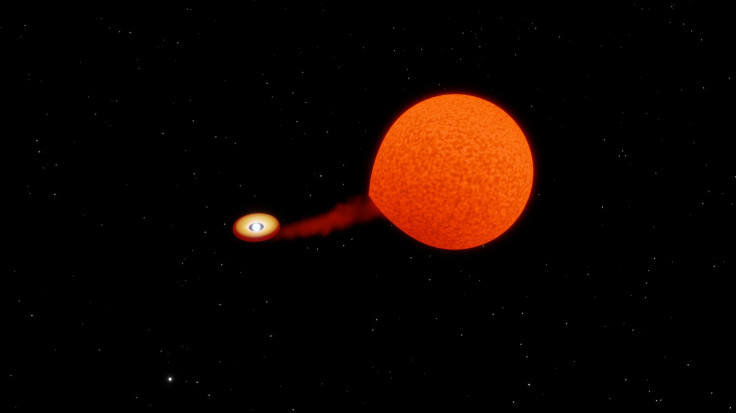Star Survives Supernova, But Explosion Blows It Through Milky Way Galaxy

A scrappy white dwarf star flying through the Milky Way galaxy may have survived a supernova explosion and if it’s what scientists think, it would give them evidence to back up a new idea about what these massive space blasts look like.
A study in the journal Science identified the little star, saying it “is low-mass, is moving quickly and has an unusual composition.” The authors are suggesting it could be debris left over from a type Iax (one-a-x) supernova, a small version of these explosions.
Although they all involve stars blowing up, there are different kinds of supernovas. The most well-known is probably the type II supernova, in which a massive star at the end of its long life collapses under its own gravity and goes kaboom. Type I supernovas, however, have more than one guest at their party — they can occur when a star slurps up material from a neighbor until it explodes. A newly identified subtype, Iax, happens when a white dwarf, a hot and compact star, is only partially destroyed in its own thermonuclear explosion.
In a type Ia supernova, the white dwarf would have been entirely destroyed, leaving nothing behind.
If a white dwarf were to survive such an event as a type Iax, the enormous energy of the explosion would give it a boost that would send it careening through space — it would have a “high kick velocity.”
In the case of the white dwarf this team of scientists has identified, dubbed LP 40-365, it “travels at a velocity greater than the galactic escape velocity,” the study says. That velocity is the speed required for an object if it wants to escape the gravitational pull of the galaxy, and it is hundreds of miles per second.
Other observations of the white dwarf include that its “peculiar atmosphere is dominated by intermediate-mass elements” like oxygen, neon, sodium and magnesium. It has none of the most abundant elements in the universe, hydrogen and helium, which is rare.
In addition to its mixed composition, a hallmark of its previous relationship with a companion star, it is spinning quickly.
The authors call it a “partially burnt remnant” and say it was thrown out during a type Iax supernova.
If the object is indeed a white dwarf thrown out of this kind of supernova, it would represent the first debris from such an explosion scientists have ever found, according to a report on the research.
“The researchers also note that in most cases, stars that move faster than normal are doing so because they were flung across their galaxy after traveling too close to its center,” the report says. “But the trajectory of LP 40-365 showed that it had not approached the center of its galaxy.”
The supernova that ejected the white dwarf would have happened between 5 million and 50 million years ago.
Studying this white dwarf could tell astronomers more about all supernovas, not just type Iax supernovas, and the events that lead up to them, and the team is continuing to observe the little star.
“All we ever witness is the aftermath of the explosion, that is the bright flash in the distant universe that even outshines the galaxy hosting that event,” lead study author Stephane Vennes said in a statement. “But now, with the discovery of a surviving remnant of the white dwarf itself, we have direct clues to the nature of the most important actor involved in these events.”
© Copyright IBTimes 2024. All rights reserved.




















